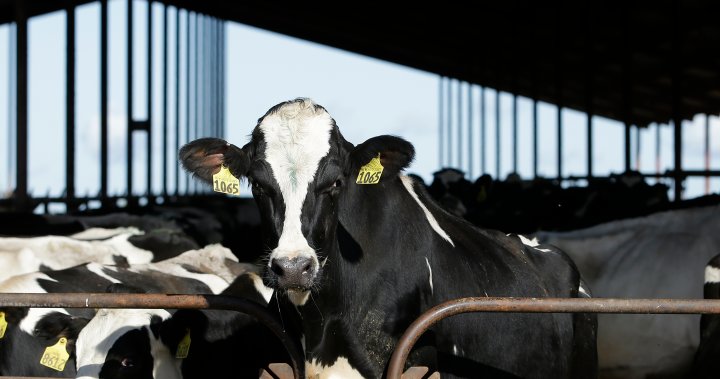Alberta officials are closely monitoring the ongoing bird flu outbreak in dairy cows in the United States. The disease has been found in herds in 11 U.S. states, including Minnesota and Iowa. Dairy producers have been advised to closely monitor their herds for any signs of the disease. Import requirements for lactating dairy cows from the U.S. have been implemented in Canada, with the animals needing to test negative for bird flu within seven days of export. So far, no cases of the disease have been found in Canadian cows, and all milk sold in stores must be pasteurized to effectively kill the virus.
Chief provincial veterinarian Dr. Keith Lehman emphasized the importance of dairy farmers taking steps to minimize the risks of avian influenza getting into their herds and spreading. He recommended isolating new animals, testing them for the virus before introducing them to the herd, and closely monitoring the health of the cattle. Signs of avian influenza infection in dairy cattle include reduced milk production, loss of appetite, and thicker milk consistency. The World Health Organization confirmed the first-ever human death caused by a strain of bird flu on June 5, although the source of exposure to the virus is currently unknown.
Lehman stated that influenza viruses are constantly monitored for any potential risks to human health. Although there is a risk of these viruses becoming greater health risks and spreading from person to person, the current situation does not indicate that this is the case. Dairy producers are encouraged to maintain a heightened sense of awareness and take necessary precautions to prevent the spread of avian influenza in their herds. Testing for the virus is available for farmers who want to screen their animals before introducing them to the herd.
Overall, it is crucial for dairy producers in Alberta to remain vigilant and proactive in monitoring their herds for signs of avian influenza. With the increasing prevalence of the disease in U.S. dairy cows, it is important for farmers to take steps to prevent the introduction and spread of the virus in their herds. By implementing measures such as isolating new animals, testing for the virus, and closely monitoring the health of the cattle, producers can reduce the risks of avian influenza impacting their herds. Additionally, staying informed about the current situation and following recommended guidelines from officials can help mitigate the potential threats of the disease to both animal and human health.


